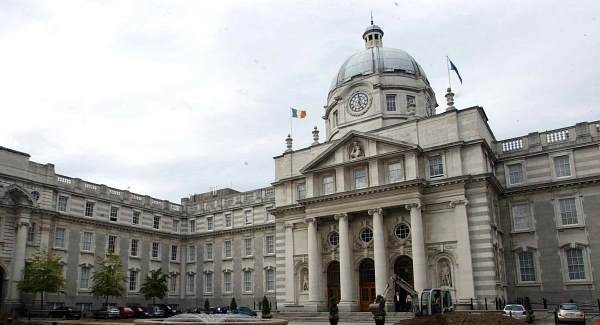The Dublin Bay South bye-election results are now in, seeing Senator Ivana Bacik of the Labour party win the seat left vacant by Fine Gael’s Eoghan Murphy. Fine Gael opted to run James Geoghegan, a comparatively unknown figure in national politics and, following his series of campaign blunders, the party may currently be wishing they had kept it that way. Lynn Boylan MEP ran an impressive campaign, and garnered strong support in working class areas of the constituency, coming in third behind Bacik and Geoghegan. The election was disastrous for Fianna Fáil, with Deirdre Conroy’s elimination on the seventh count raising doubts about the future security of Jim O’Callaghan’s seat. Housing was the central issue of this election, with Geoghegan, Bacik, Boylan and Conroy enjoying varying degrees of success in their engagement.
Why Geoghegan?
Labour and Sinn Féin notably selected two of their most well known candidates to contest in the bye-election. Bacik’s name is, for many, synonymous with repeal and a record of political activity spanning back to her TCDSU presidency. Boylan is another household name, with years as an MEP for the Dublin constituency under her belt. Compared with Kate O’Connell, a well known figure who previously held a seat in Dublin Bay South, Geoghegan was essentially unknown. Geoghegan’s selection – and his repeated references to his own age and “energetic” approach – may have been an attempt to appeal to the age demographic that Fine Gael is hemorrhaging support for, as Sinn Féin establish themselves as the most popular party for under 35s. Throughout the campaign, Geoghegan attracted derision for his claims to represent a generation locked out of homeownership, given he is an affluent homeowner. Of course, it isn’t your background that matters, but your policies. Unfortunately, given the party he represents, these weren’t particularly convincing either. Unfavourable information which came to light about Geoghegan during his campaign (including being a founding member of Renua, and working for Transatlantic Public Affairs which lobbies for the corporation that produces Marlboro cigarettes) likely contributed to his failure, and saw him lose to Bacik by just over 4%, even in a constituency widely regarded as a Fine Gael stronghold.
Labour
The Irish Times poll published last month established the election as a two horse race between Bacik (22%) and Geoghegan (27%). This poll likely accounted partly for the Greens’ poor performance, compared to their sweeping success in the last general election which saw party leader, Eamon Ryan win a seat in the constituency. On Thursday, soft left voters who usually lean Green may have opted to vote for Bacik in an attempt to block a Fine Gael seat. While Labour are polling poorly on a national level, bye-elections are a different story for the party, particularly in affluent areas. Bacik received over seven times the percentage of first preference votes that Labour received in the last general election, winning the seat with 30% of first preference votes. For one of the most socially liberal constituencies in the country, Geoghegan’s shady history in the anti-abortion party Renua was damaging, even in a Fine Gael stronghold – this was only magnified by Bacik’s campaign material which focused on her experience in campaigning for repeal and women’s healthcare.
Fianna Fáil
The bye-election was calamitous for Deirdre Conroy, who’s campaign resulted in a paltry 4.6%. Fianna Fáil’s campaign was predictably weak on the issue of housing, especially following the disastrous emergence of Conroy’s “Diary of a Landlady” blog, which featured both blatantly racist posts about her tenants, and strange diatribes on Miley Cyrus’ VMA performance. This, combined with her bizarre promotional material, which included a video with the Mission Impossible soundtrack playing in the background (a musical choice which became increasingly apt as her campaign progressed) did not bode well for a party hoping to retain any relevance in Dublin. It is also noteworthy that the three government parties collectively received under 40% of the vote.
Fine Gael’s strategy
What is evident from Fine Gael’s conduct throughout the campaign is that the party is increasingly threatened by the growing popularity of Sinn Féin. Even when the opinion polls identified Bacik as the biggest threat to Geoghegan, Fine Gael continued to produce targeted campaign material warning voters of a Sinn Féin surge. As votes began to pour in on Friday, Fine Gael issued a tweet saying “Big Sinn Féin turnout being reported. Don’t let Sinn Féin in by staying home”, following the high voter turnout in Pearse Street and Ringsend, areas in which Sinn Féin are extremely popular. In a promotional video for Geoghegan last month, Simon Harris used the opportunity to demand Lynn Boylan clarify her stance on the Special Criminal Court, instead of promoting Geoghegan’s campaign, or indeed doing absolutely anything else. Harris also claimed the election would be a “shoot out” between his party and Sinn Féin, although polls later contradicted this. Fine Gael’s persistent and ill judged attacks on Sinn Féin throughout the campaign speaks to both their fear of the party’s popularity, and, as history shows, the fact that they view Labour as a palatable coalition partner.
Other candidates
The election also saw a handful of right wing candidates run, who predictably did poorly. Aontú, the National Party, Dolores Cahill and Renua collectively received under 5% of the vote, with the only development of note being Cahill causing a scene when she was not allowed into the RDS for refusing to put on a mask. Independent Mannix Flynn outdid both People Before Profit and the Social Democrats despite an essentially non-existent campaign, which again demonstrates that this was an election in which people favoured familiar faces over newcomers.






